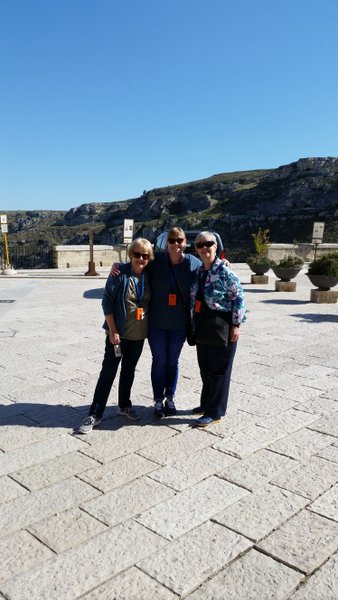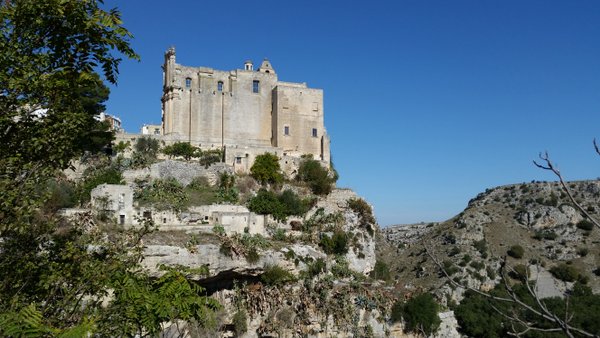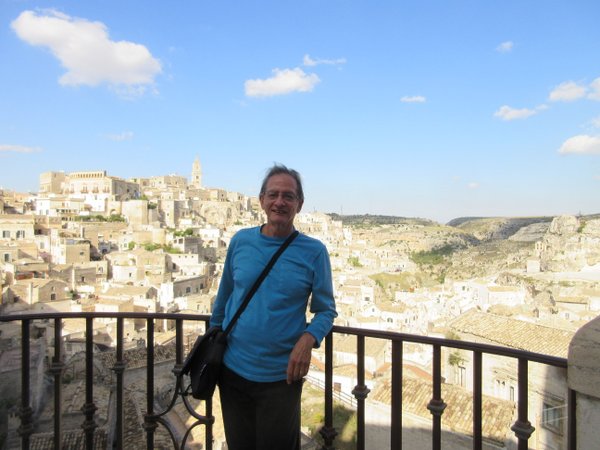A Journey
through Southern Italy by Joe Andriano, with Gail Andriano October 6-22, 2017 Part II. From Calabria to Matera |
Both my
grandfathers were from the small town of Grotteria,
built on a mountain ridge in Reggio Calabria, the tip of the Italy
boot. On this trip, we only passed through this beautiful region.
Some day, perhaps, I'll go there, but if not at least I have a copy of
the
journal my late Uncle Charles Panetta wrote when he visited there with
his sister, my Aunt Marian, in the
year 2000. Reading that journal made me feel closer to my roots
than this tour did. But again, at least I was in the vicinity!
Leaving
Sicily, we took this ferry across the Strait of Messina to Calabria.
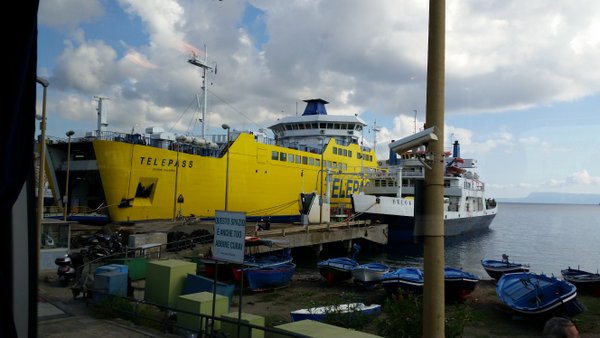
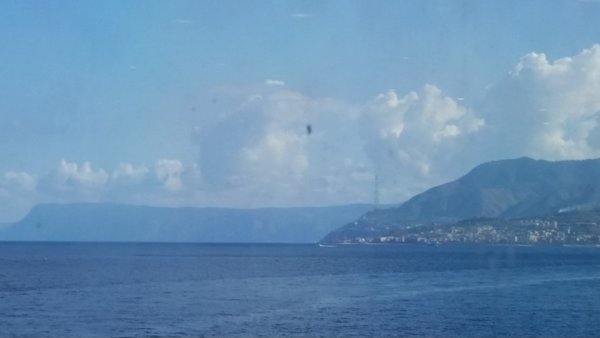
We
crossed the Strait of Messina and drove in a fancy new bus through the
land of my grandfathers. That's Gaetano, our Sicilian tour manager.
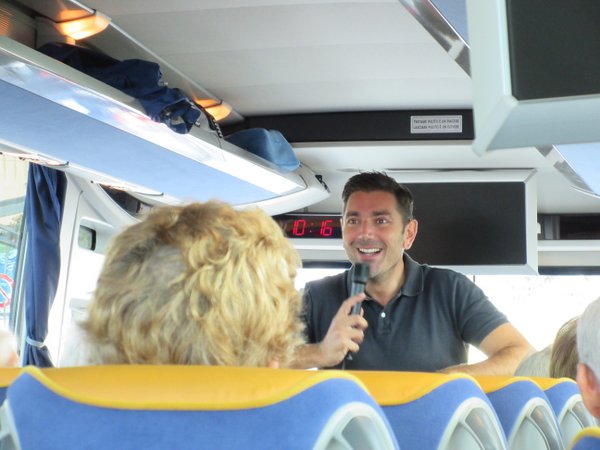
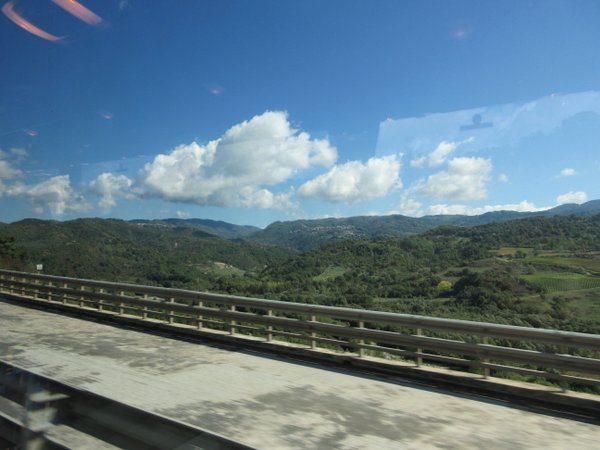
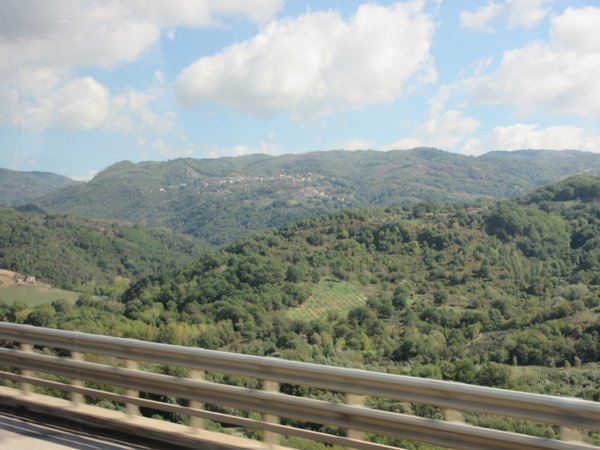
We stopped for lunch and sampled some spicy Calabrese food.
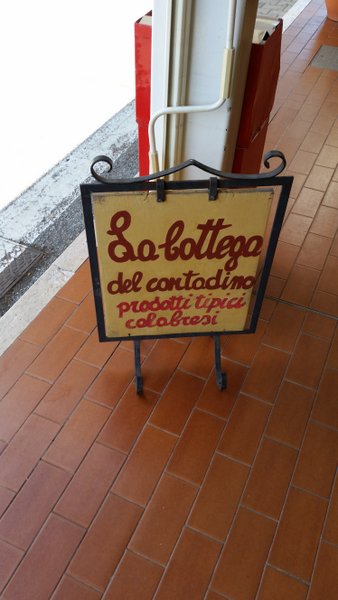
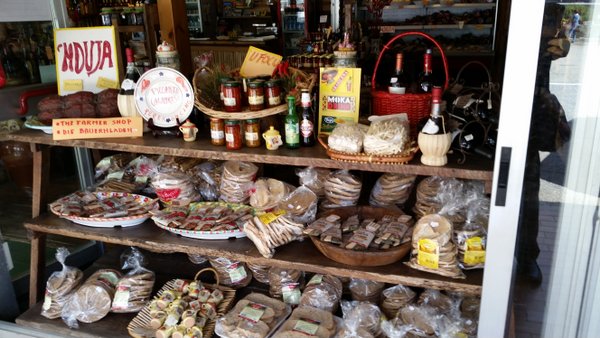
Then back on the road, reaching the Calabrian coast, getting a glimpse of the resort city of Locra on the Ionian Sea.
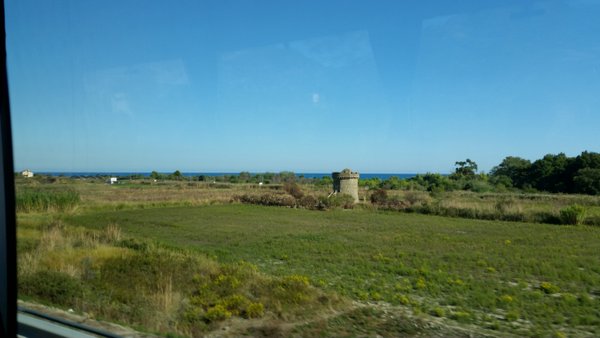
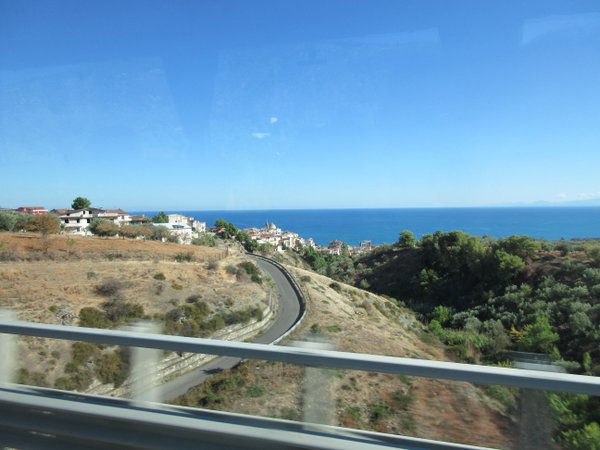
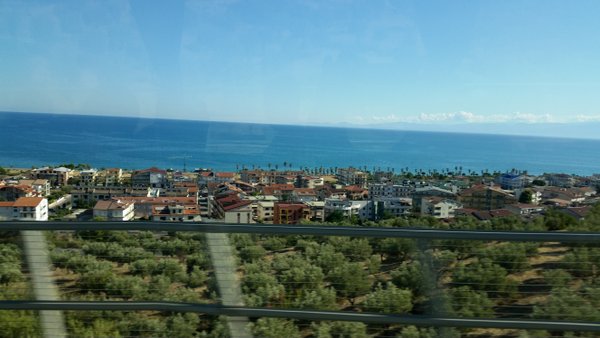
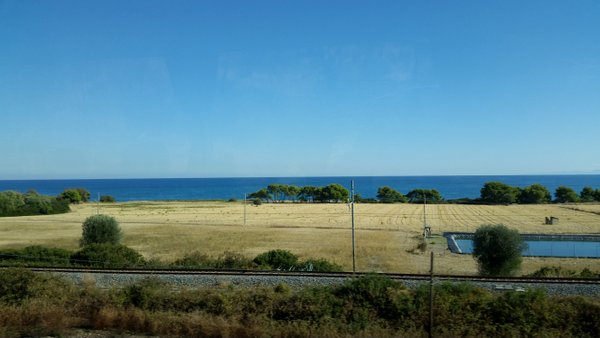
*********
Matera
We arrived in Matera, city famous (and infamous) for its sassi, ancient cave dwellings built on the slope of the ravine (la Gravina).
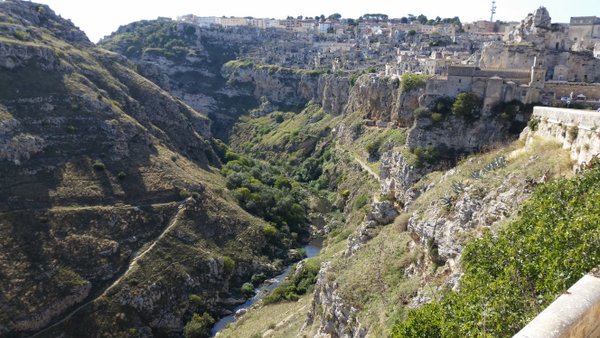
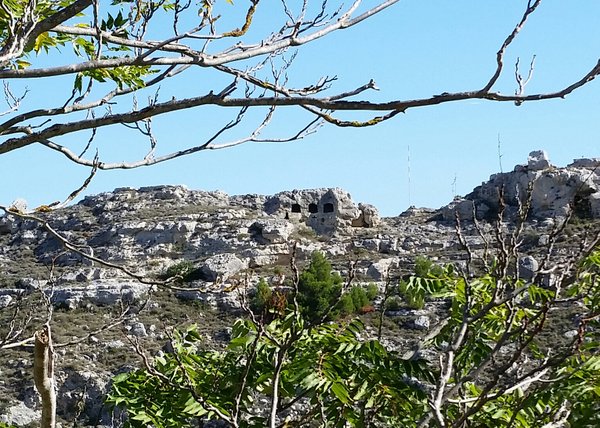
Arriving
in the late afternoon, we ate dinner in a restaurant built in a cave,
then took a walk to view the city at night . . . .
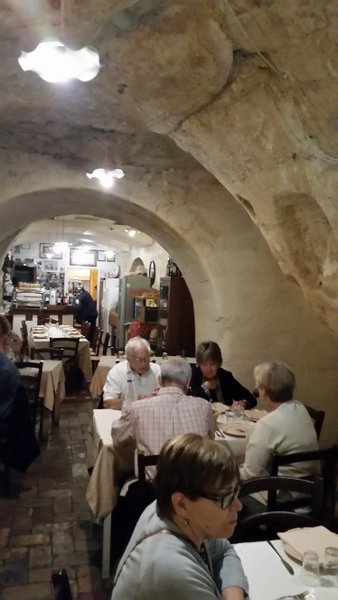
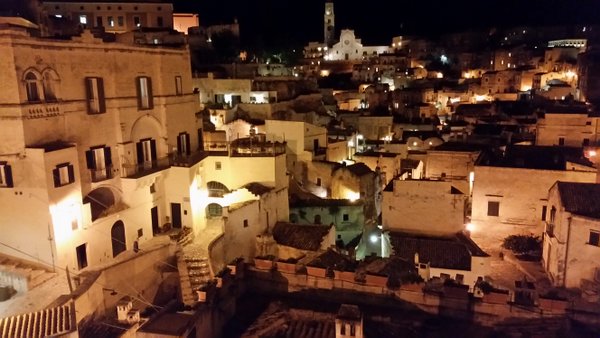
We explored the city the next morning, on a lovely day, passing by a spot where the first part of the recent Wonder Woman
movie was made (Mel Gibson's The Passion of the Christ was also filmed in and around Matera).
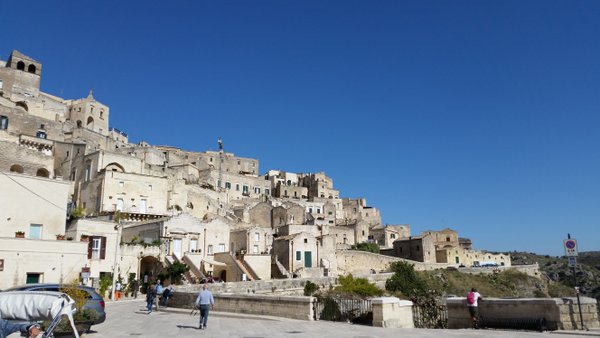
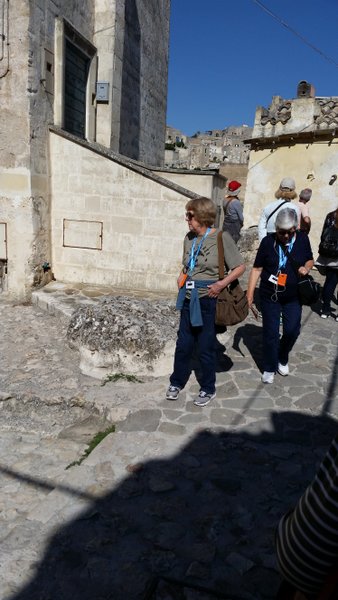
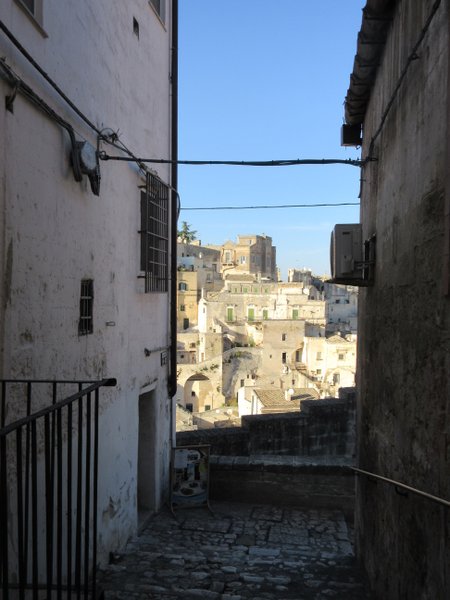
To Gail's delight, we met a couple of cats.
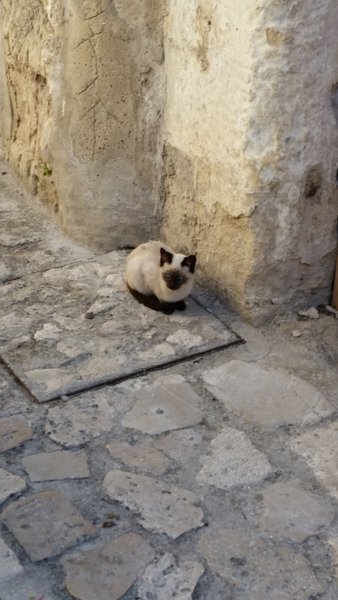
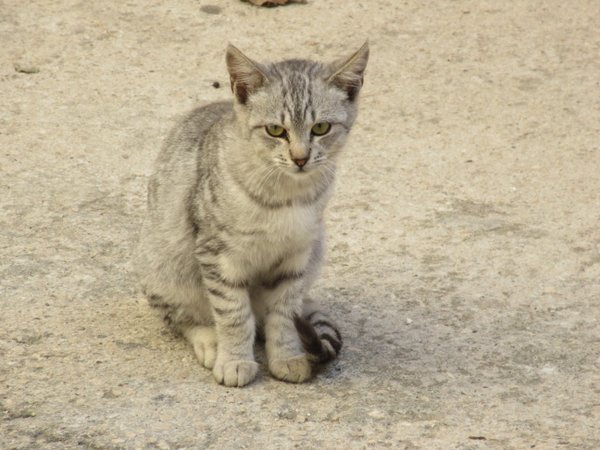
We also toured
one of the cave dwellings (below) where people still lived into the 1960s. It was rather depressing to hear about the sassi-dwellers whose
"problems began in the early 19th century, when an unsustainable
increase in population led to the habitation of sassi previously
reserved for animals and storage. Most of these 'homes' lacked natural
light, ventilation, or running water. . . . The town's subsequent
squalor and poverty . . . were brought to the attention of the wider
world in 1945 by Carlo Levi in his book Christ Stopped in Eboli.
In the 1950s, the government was shamed into action and forcibly
removed some 15,000 inhabitants from their cave dwellings, thrusting
them into the modern world for which they were not prepared (National Geographic Traveler)
On
our own for part of the afternoon, we visited Matera's Cathedral, in
which, among the many later baroque works we saw the only picture
original to the church's medieval decorations to have survived, "The
Last Judgment" by Rinaldo da Taranto. Another study in contrast was the
Byzantine-style fresco of the Madonna della Bruna and child.

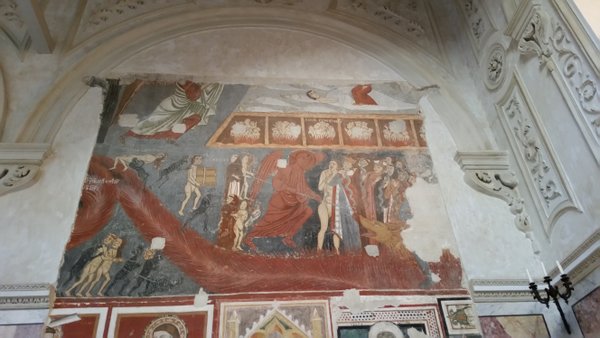
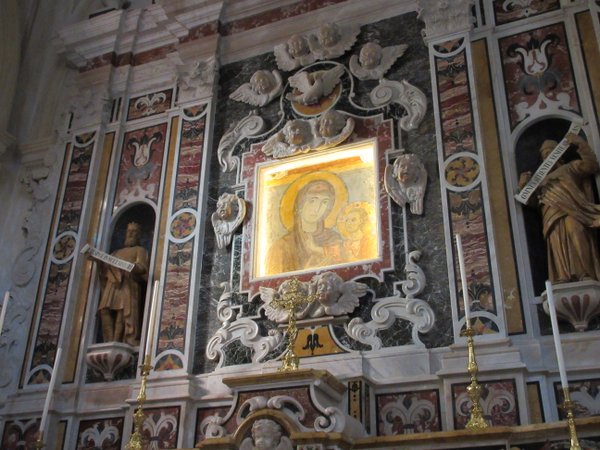
If
you look carefully at the second pic below, you'll see that someone
decided to express an Italian obcenity on a large sign. Gaetano assured
me that it was not an expression of hostility against tourists (whom
they welcome) and probably a political sneer.
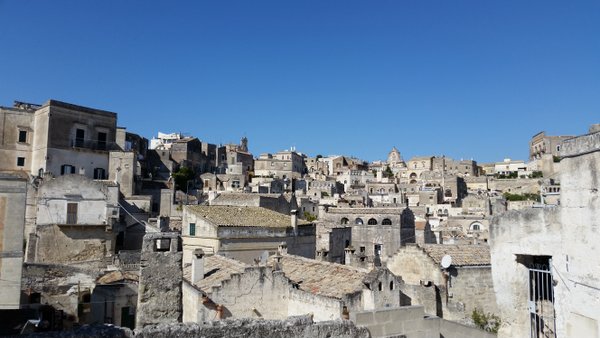
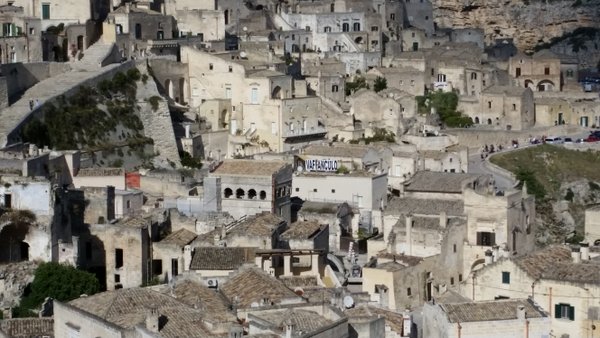
On
the whole, we thoroughly enjoyed our two days in Matera! That's Gail
with two of our favorite fellow-travelers, Deirdre and Kathy (her aunt).
